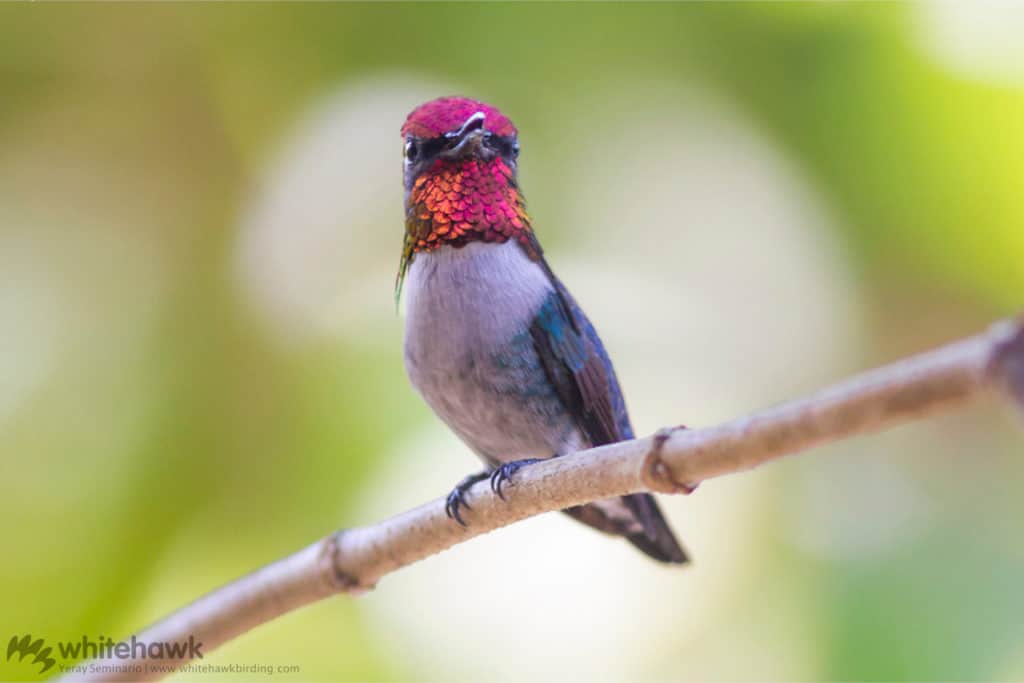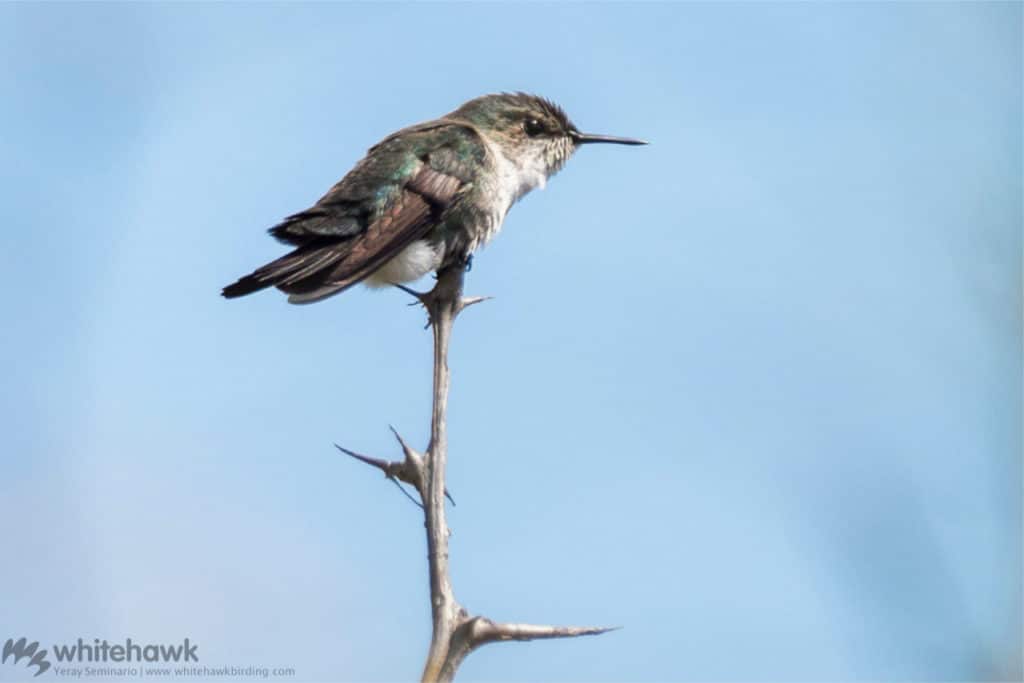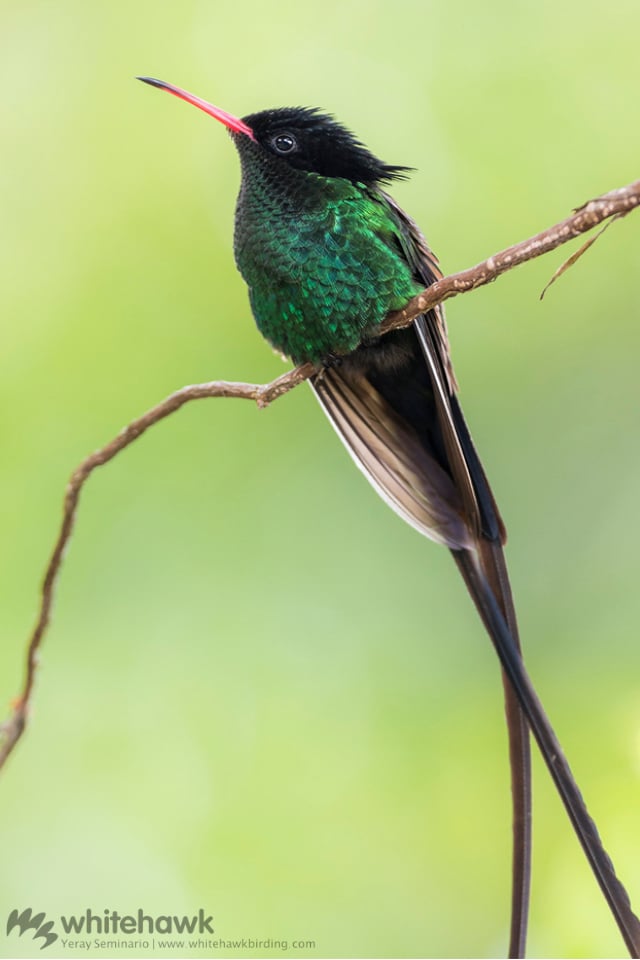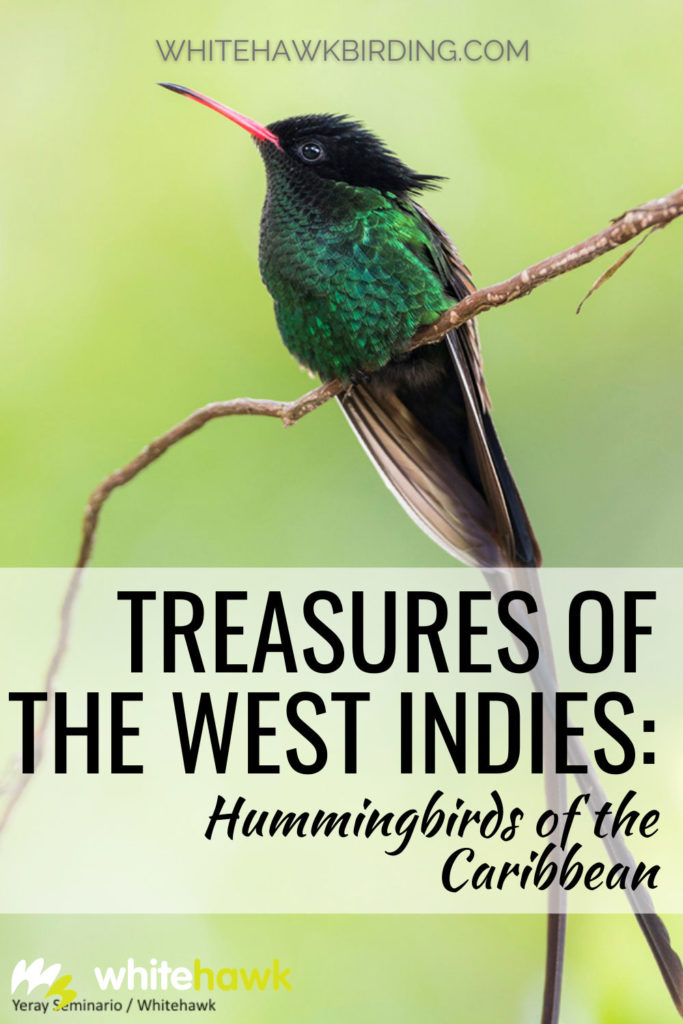Hummingbirds are unique to the Americas. We can find them throughout the region in a number of different habitats and elevations. The Caribbean is no exception. The hummingbirds of the Caribbean dazzle us with their beautiful iridescent colors and intriguing behaviors. The islands of the West Indies are home to some unique and lovely species that are relatively easy to observe. Furthermore, there’s much to learn about their natural history and conservation.
Which Caribbean hummingbirds are endangered?
Thinking that many hummingbird species in the Caribbean may be endangered is a reasonable assumption. After all, islands are extinction epicenters. In fact, about 90% of all bird species extinctions since the year 1500 have occurred on islands. Furthermore, the risk of extinction increases in species that occupy small territories. This reinforces the idea that a number of Caribbean hummingbirds may be endangered.
Despite all these facts, only one species of hummingbird is extinct in the Caribbean. No one has reported Brace’s Emerald (Chlorostilbon bracei) on the island of New Providence (Bahamas) since 1877. However, based on Birdlife information, there could be potentially two extinct species – the second is the Caribbean Emerald (Chlorostilbon b. elegans). This is a subspecies of Brace’s Emerald, according to eBird taxonomy.
Additionally, only one species is Near Threatened, despite the high risk of threats. The IUCN has classified the world’s smallest bird, the Bee Hummingbird (Mellisuga helenae), in this category due to its population decline. The other 18 Caribbean hummingbirds are classified as Least Concern. These hummingbirds, for the most part, are unique to the West Indies.

The Endemic Hummingbirds of the West Indies
Both The Birds of the West Indies, and Birds Caribbean include the Lucayan Archipelago, the Greater Antilles, the Lesser Antilles (ending with Grenada in the South), Providencia and San Andres in this region.
The Caribbean has four non-exclusive species: Rufous-breasted Hermit, Green-breasted Mango, Ruby-throated Hummingbird and Rufous Hummingbird. Fifteen hummingbirds are unique to the Caribbean. Just like the endemic hummingbirds of Central America, most of these birds have restricted ranges, extending to only a few islands. However, the Antillean Crested Hummingbird (Orthorhyncus cristatus) has a wider extension from Puerto Rico to the Lesser Antilles.
There, in the Lesser Antilles, we can also come across the Purple-throated Carib (Eulampis jugularis), Green-throated Carib (E. holosericeus) and the Blue-headed Hummingbird (Cyanophaia bicolor). Up north in Puerto Rico, we may stumble across the Puerto Rican Emerald (Chlorostilbon maugaeusand), or Green Mango (Anthracothorax viridis), both restricted to the “island of enchantment”. In Puerto Rico we can also spot the Antillean Mango (Anthracothorax dominicus), which extends its range to the Hispaniola Islands.
The second largest island in the Caribbean, Hispaniola, has two more species of hummingbird. The endemic Hispaniolan Emerald (Chlorostilbon swainsonii) and Vervain Hummingbird (Mellisuga minima). The latter is also found in Jamaica. Also, there, in the heartbeat of the world we can find two more hummingbirds: the Jamaican Mango (Anthracothorax mango) and the spectacular Streamertail (Trochilus polytmus).

Continuing north to the largest island of the Caribbean, we can find the Near-Threatened Cuban endemic Bee Hummingbird and the Cuban Emerald (Chlorostilbon ricordii). The latter, despite its name, is not endemic to Cuba. It is also found in the Bahamas. Speaking of the Bahamas, we can find the last two endemics of the Caribbean there: Bahama Woodstar (Nesophlox evelynae) and Inagua Woodstar (N. lyrura).
Endemic genus and subspecies
As if the number of endemic hummingbirds in the Caribbean were not enough, six genera are unique to this region: Eulampis, Nesophlox, Mellisuga, Cyanophai, Orthorhyncus and Trochilus. In addition to this, some Caribbean hummingbirds have endemic subspecies on some islands:
Green-breasted Mango
- We can find Anthracothorax prevostii hendersoni on the islands of San Andres and Providence.
Green-throated Carib
- Eulampis h. holosericeus is distributed from Puerto Rico and the Virgin Islands to the Lesser Antilles, with the exception of Grenada.
- Eulampis h. chlorolaemus – endemic to Grenada
Vervain Hummingbird
- Mellisuga m. minima – the Jamaican subspecies
- Mellisuga m. vielloti – Hispaniola, Gonâve, Tortue, Saona, Catalina and Île-à-Vache
Antillean Crested Hummingbird
- Lesser Antilles (Orthorhyncus c. exilis) – from Puerto Rico eastward through the Virgin Island, and south through the Lesser Antilles to St. Lucia
- St. Vincent (Orthorhyncus c. ornatus) – endemic to St. Vincent
- Grenadines and Grenada (Orthorhyncus c. emigrans) – Grenada and the Grenadines
- Barbados (Orthorhyncus c. cristatus) – endemics to Barbados
Streamertail
- Trochilus polytmus polytmus – Red-billed Streamtail
- Trochilus polytmus scitulus – Black-billed Streamtail

The Caribbean definitely has many one-of-a-kind hummingbirds to offer. Clearly, having few endangered Caribbean hummingbird is fortunate. However, new threats may emerge such as climate change. A recent study points out that Caribbean hummingbirds living in rainy mountainous landscapes with cooler temperatures are more vulnerable to extinction than hummingbird in lowlands. This prediction is related to the vulnerability of species that are specialists to a limited number of plants and food resources. This study found that hummingbirds in mountainous area are more specialized. Therefore, a change in temperature could alter this relationship and increase the risk of extinction.
Many of the actions we are already aware of to mitigate climate change can help these hummingbirds and wildlife in general. We can also help Caribbean hummingbirds by supporting conservation initiatives in the region, whether it be through donations, volunteering, or any other way you are able.


